Dawnrunner is a mecha-kaiju comic about the ‘Bandai-ification’ of the military-industrial complex
Every beloved work of mecha fiction, whether anime or not, isn’t just about cool robots. Whether it concerns the anti-war underpinnings of Mobile suit Gundam, Neon Genesis Evangelion‘s allegory for learning to love and be loved in return, or a commentary on the ways in which power is concentrated in the hands of a select few, the mecha genre is filled with stories that reach for something deeper than the chromed exterior of his humanoid war machines.
Dawnwalkerthe new original sci-fi comic series from Detective comics writer Ram V and artist Evan Cagle (Cat lady #32), follows in the footsteps of these giants and creates a story that follows Anita Marr, a mech pilot in a post-apocalyptic future who must pilot a powerful new prototype to defeat an extra-dimensional threat. It’s a mecha-kaiju story, yes, but it’s also a ghost story, depicting the relationship between Anita and a weapon that seems to have a mind of its own—quite literally. It’s a big action drama with big, beautiful works of art and even bigger questions at its core. For example: what do all people have in common, even centuries apart? Or something else, as Cagle puts it: “What if the military-industrial complex behaved more like Bandai?”
“I probably had this story in my head around 2015 or 2016,” Ram told Polygon in an interview via Zoom. “It started out as a mecha-kaiju story in concept, but also with the science fiction of it, the human drama of it, and the elements of a ghost story. The basic idea is that people communicate with each other over time.”
Image: Aries V, Evan Cagle/Dark Horse Comics
While he had the basic concept down, a mecha-kaiju story that could be summarized as ‘Pacific Rim as told by the people behind it Arrival”, it wasn’t until Aries came across Evan Cagle’s artwork on social media that the idea of what that would become was born Dawnwalker began to fully come to life.
“I hadn’t really acted on it until I saw this illustration that Evan had created Neon Genesis Evangelion called Calvary. I saw that and I went, Man, if I ever do that mecha kaiju story, this is the artist I have to work with.Shortly afterwards, Cagle contacted Ram to compliment him on his 2018 graphic novel Grafity’s wall, and expresses his desire to work together in the future. “It was largely serendipity, but part of it is that it was one of those ideas that had been floating around in my head for a while. So I’m glad it all came together.”
It takes place almost a century after a race of mysterious giant monsters known as the Tetza invaded Earth. Dawnwalker is set in a world where civilization has radically changed – governments have been dissolved and replaced by an oligopoly of weapons manufacturers dedicated to fighting the Tetza with colossal mechanized weapons known as ‘Iron Kings’. More than a hundred years of standstill conflict has transformed the war against the Tetza into a televised spectacle akin to a gladiatorial sport – where champion pilots are portrayed as celebrities and defeating the Tetza is a formality in the service of maintaining power and profit.
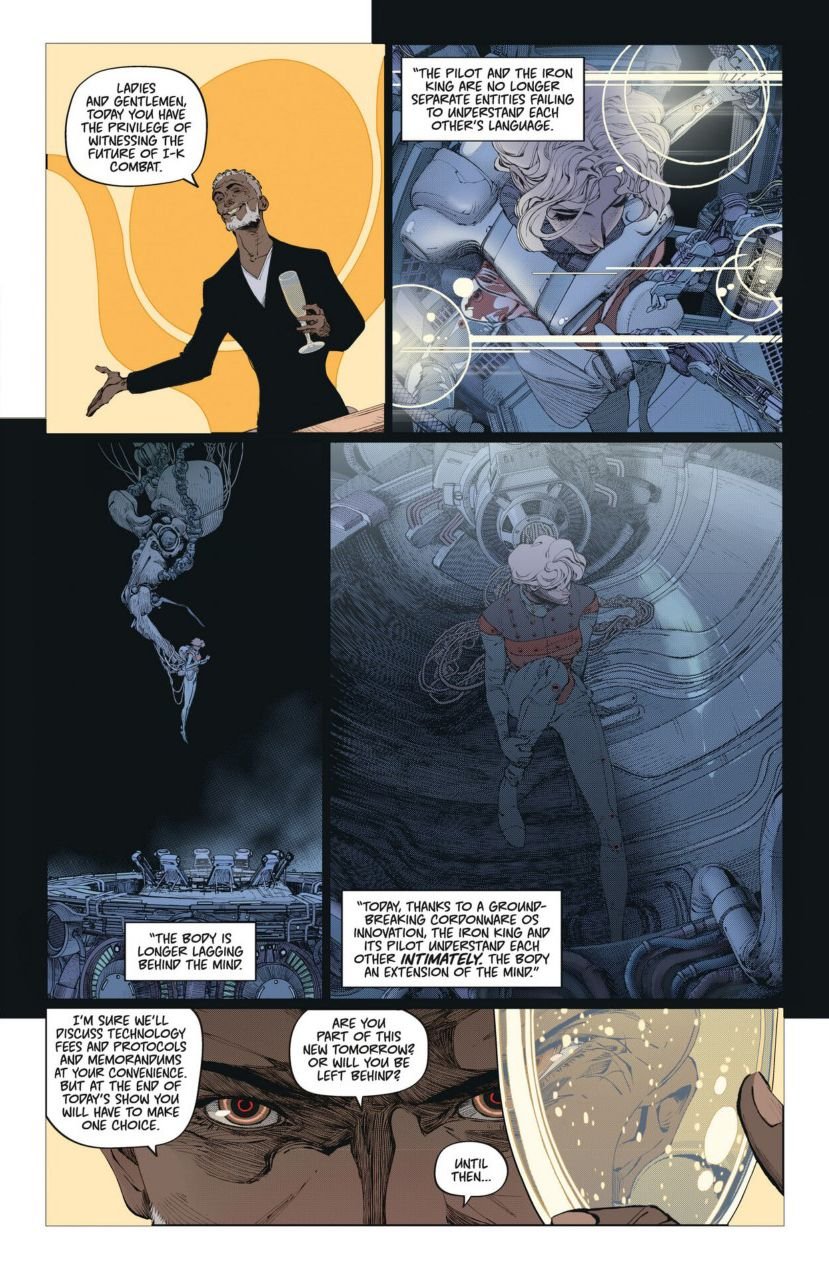
Image: Aries V, Evan Cagle/Dark Horse Comics
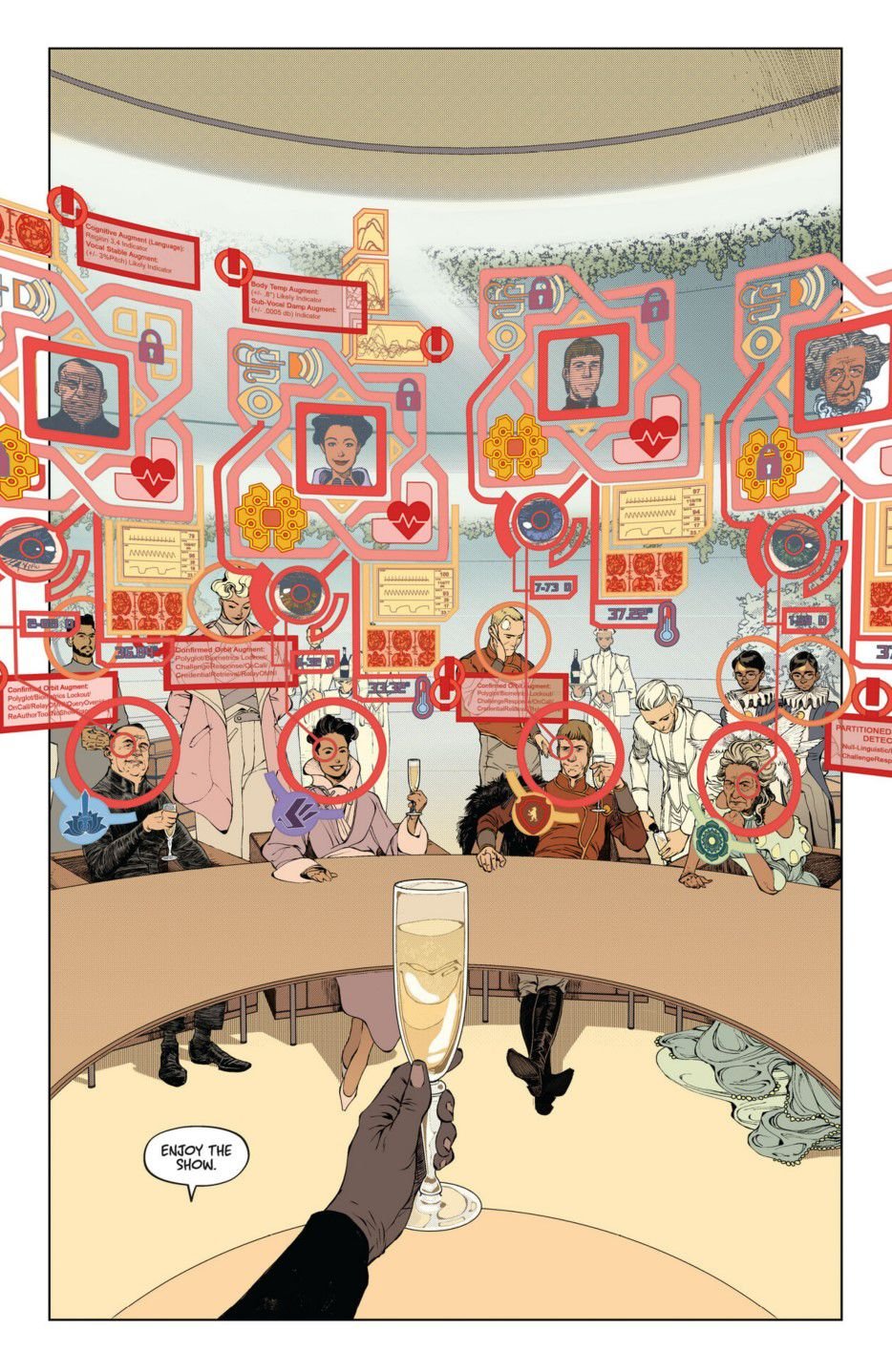
Image: Aries V, Evan Cagle/Dark Horse Comics
“More than anything else, it’s a reflection of my views on the commodification of human conflict that we’re seeing now,” Ram told Polygon. “You know, there’s a war going on in Ukraine, there’s a war going on in Israel and Palestine, and I think to a large extent the Western media and the global media are looking at these conflicts as opportunities for engagement (and) to express lay an exciting story for their viewers. Every time I see or hear someone describe something like an ‘exciting day in Ukraine today’, or ‘What are the military tactics of such and such an operation, oh, so interesting’, I think that only someone so disconnected from the The humanity of it all might someday make a comment like “That conflict was very interesting today.” As for me, what we see in it Dawnwalker is a logical consequence of that.”
Cagle likens this commodification to an existential threat to humanity Dageraadrunner to the way toy companies like Bandai have marketed Gundam model kits. “For example, you are going to introduce a new mech or a new enemy every week, so that you can roll out a toy of it in the coming months. There are several in-universe reasons why you might be rolling out a new toy every week, but that’s really all nonsense, right? For example, everyone knows that the reason you get a new one every week is so they can sell you a toy. Dawnwalker essentially asks the question, “What if the military-industrial complex behaved more like Bandai?”
This philosophy is of course reflected in the designs of the Iron Kings themselves, especially the Dawnrunner. Cagle cites multiple examples from anime and manga that inspired his approach to designing the series’ titular mech, from films like Mobile Suit Gundam: Char’s Counterattack And Metal Skin Panic MADOX-01 to series like VOTOMS And The five star stories. “It’s really just a grab bag of everything I love,” says Cagle. “I wanted the (Hajime Katoki) style fins of this Gundam on Dawnrunner’s back; I wanted the (Kazumi Fujita) style feet from Hi-Nu Gundam. It feels a lot like kitbashing, trying to figure out how to combine all these things in a coherent way.
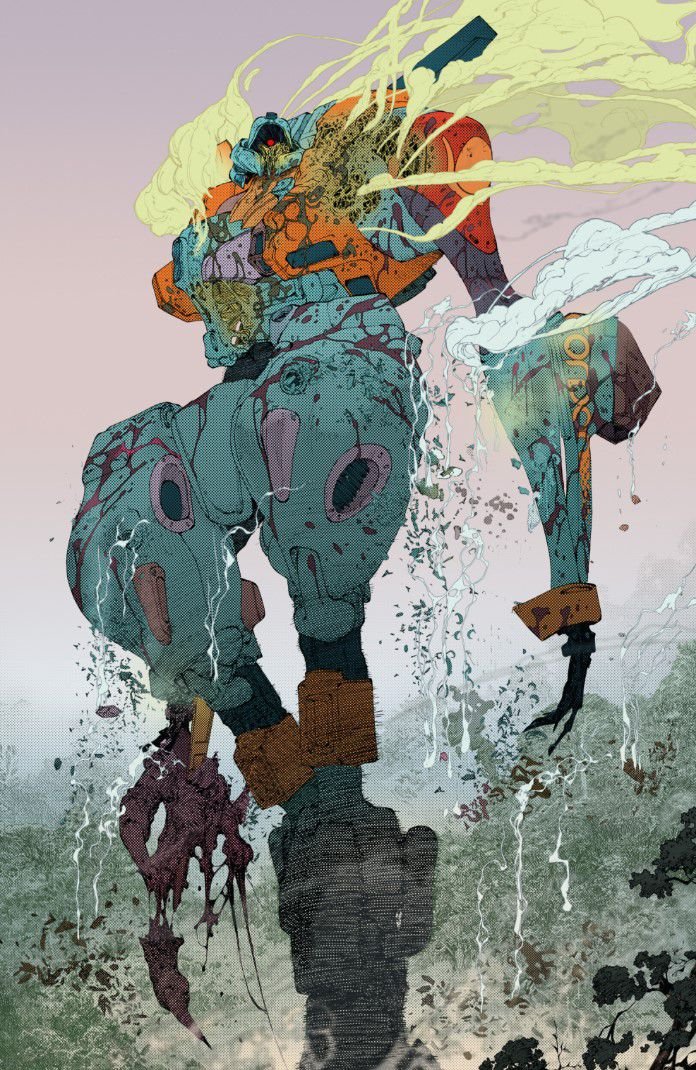
Image: Aries V, Evan Cagle/Dark Horse Comics
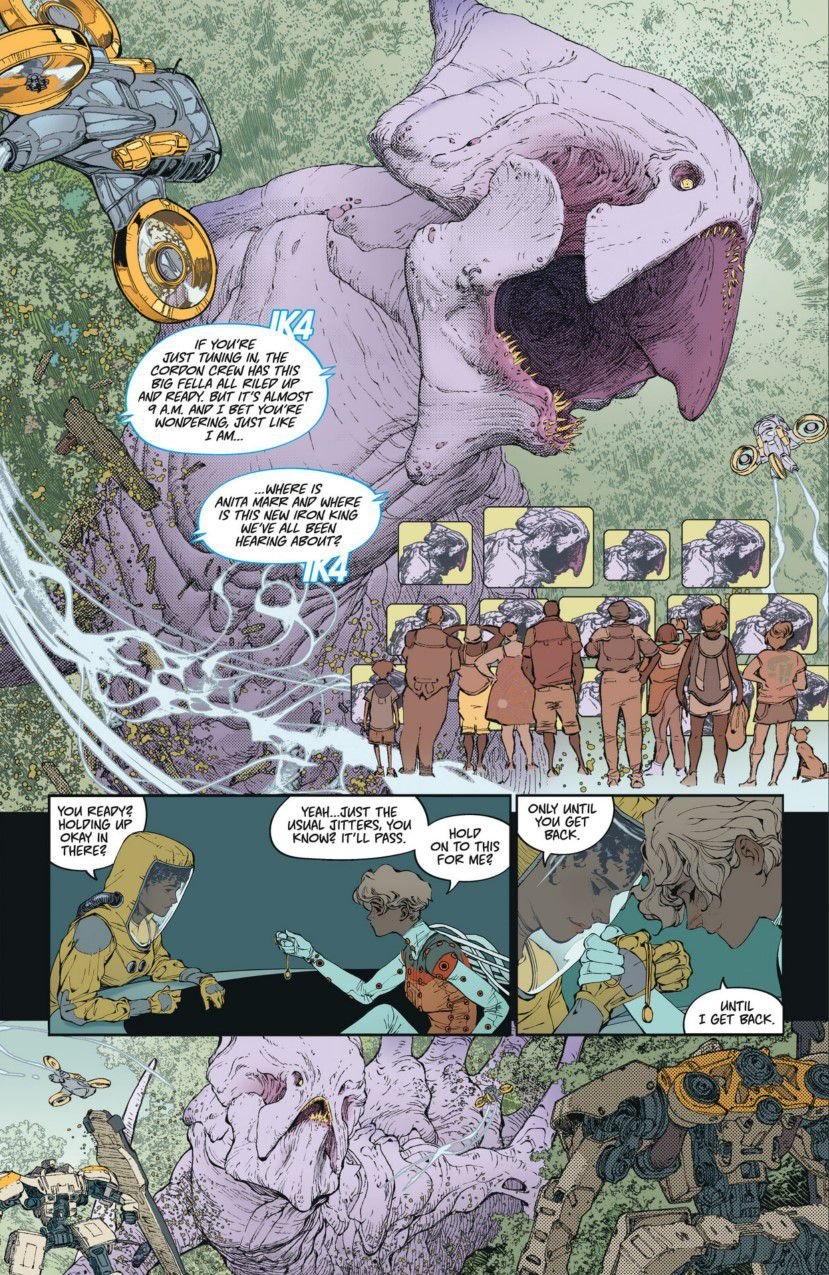
Image: Aries V, Evan Cagle/Dark Horse Comics
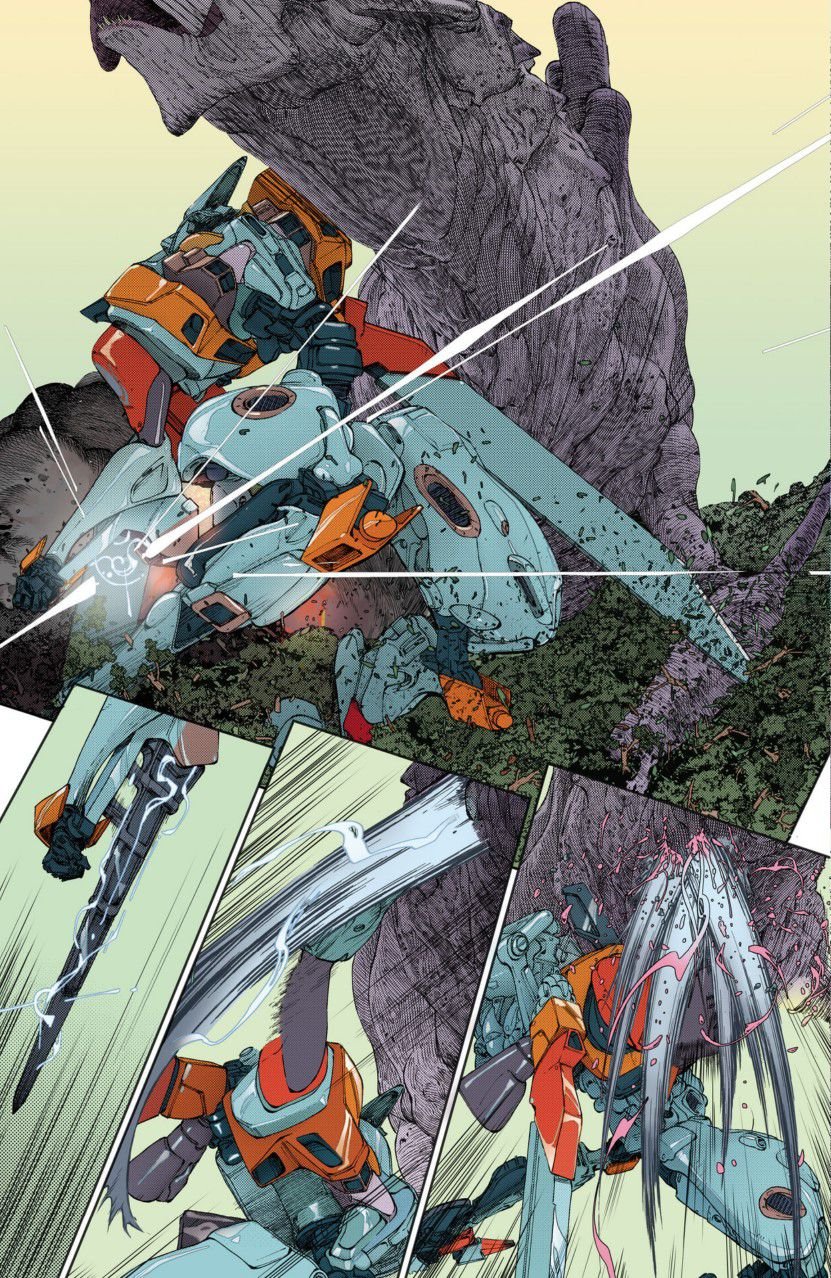
Image: Aries V, Evan Cagle/Dark Horse Comics
The result is a mecha design that pays tribute to the likes of Mobile suit Gundam And Neon Genesis Evangelion, while still being something all its own: a towering, cyclopean behemoth with prominent, protruding thighs and a creepy, skeletal upper body. “From his color scheme onwards, the racing aesthetic played a huge role in his design,” Cagle told Polygon. “It doesn’t have straight lines; everything is a curve, everything is a compound curve, everything is a Bézier. They are all flowing Ferrari lines, unlike the other Iron Kings, which have much more straight lines.”
However, beyond the eminently stylish art style and sleek mechanical design lies the beating heart of Dawnwalker: the series’ protagonist, Anita Marr. Anita, the star jockey of Cordonware, one of the five mega-corporations responsible for the creation of the Iron Kings, is an intensely private person who happens to be one of the most famous people in the world, shouldering the weight of her role as a public figure and a soldier of solemnity and poise. When Anita is sent to pilot the advanced Iron King prototype Dawnrunner on a routine flight against a Tetza, everything seems to proceed normally.
That changes when Anita, temporarily incapacitated during a battle, is overcome by an out-of-body vision of a man she doesn’t recognize. The second issue begins in the aftermath of the skirmish, with Anita having successfully defeated the Tetza, albeit plagued by doubts due to her experience piloting Dawnrunner.
(Ed. remark: Spoilers ahead Dawnwalker #2 below.)
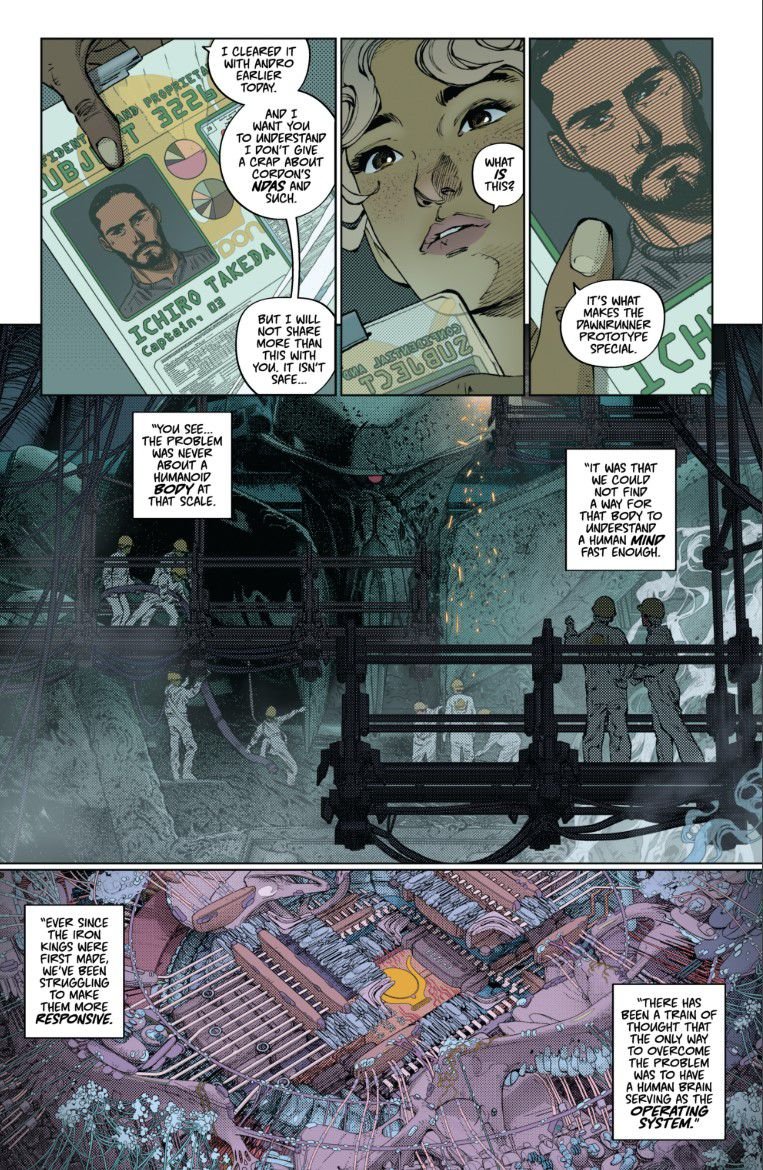
Image: Aries V, Evan Cagle/Dark Horse Comics
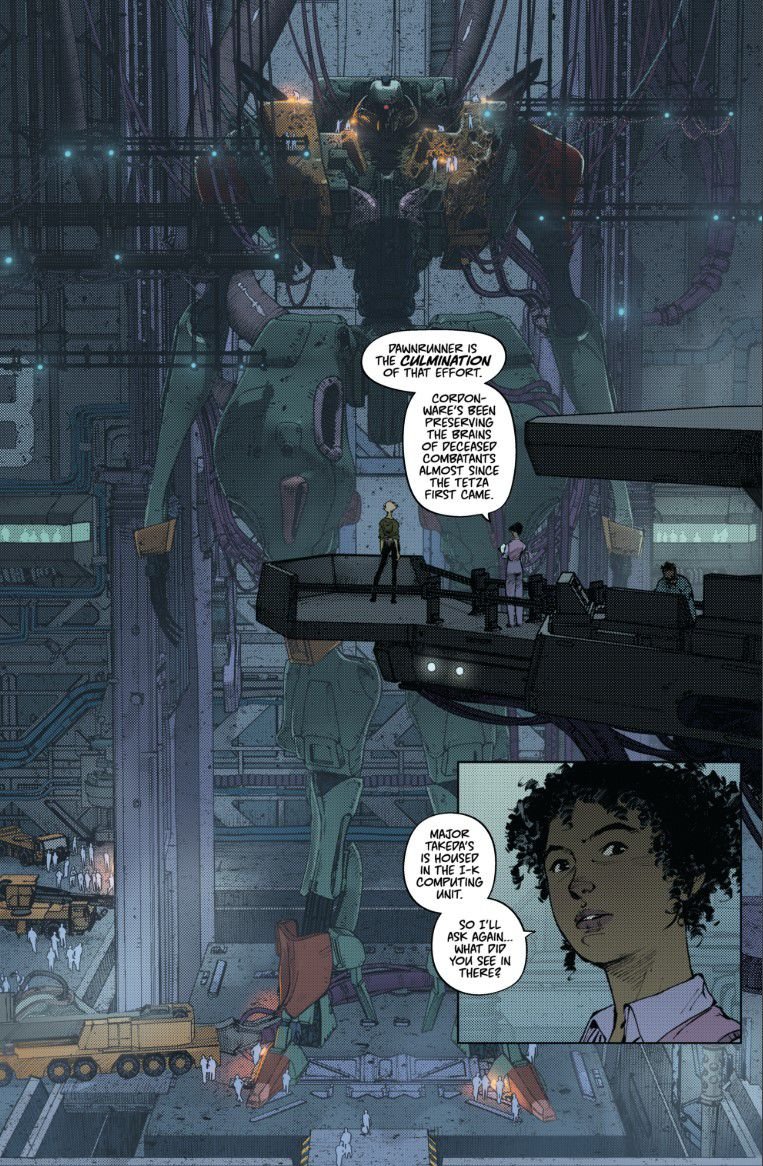
Image: Aries V, Evan Cagle/Dark Horse Comics
It turns out that Dawnrunner’s operating system is built on the mind of Ichiro Takeda, a soldier whose body was recovered after the first Tetza invasion more than a century ago. In order to successfully pilot Dawnrunner, Anita will have to somehow convince Ichiro – who has no idea that he is dead, or that his mind is being kept to power a mech – to help her in her battle against the Tetza. That’s easier said than done, as both Anita and Ichiro will have to learn to trust each other to create a force capable of saving humanity from the brink of extinction.
“Creating this rift between Anita and Ichiro brings us to one of the things I like to explore,” Ram told Polygon. “Not just by Dawnwalkerbut a lot of my stories, that’s the idea that people are fundamentally born to communicate and make connections, no matter how many things stand between them. Dawnwalker is actually a story about that, about having to form connections, in this case literally across lifetimes, and how that connection then reinforces what Dawnrunner wants to do in this world. It’s a dual story about connection and communication, both between a pilot and a mech and between a person and another person.
A post-apocalyptic mecha-kaiju drama with beautiful illustrations and a resounding emotional storyline, Dawnwalker already feels like one of the most exciting releases of 2024. With only two issues of the planned five issues used up so far, Ram V and Cagle are confident in the arc and resolution of the series, while leaving open the possibility that future stories will play out. in the Dawnrunner universe. “I feel like it will end, even at the end of this first transaction, at a place where we can easily come back and go like: And next year this happened. But we also have other things planned, and we’d like to see this take its time and grow a bit before we see if we can come back to it.
Dawnwalker issue 2 can be purchased digitally at Dark Horse Comics and in print wherever comics are sold. A collected edition is coming in November.
